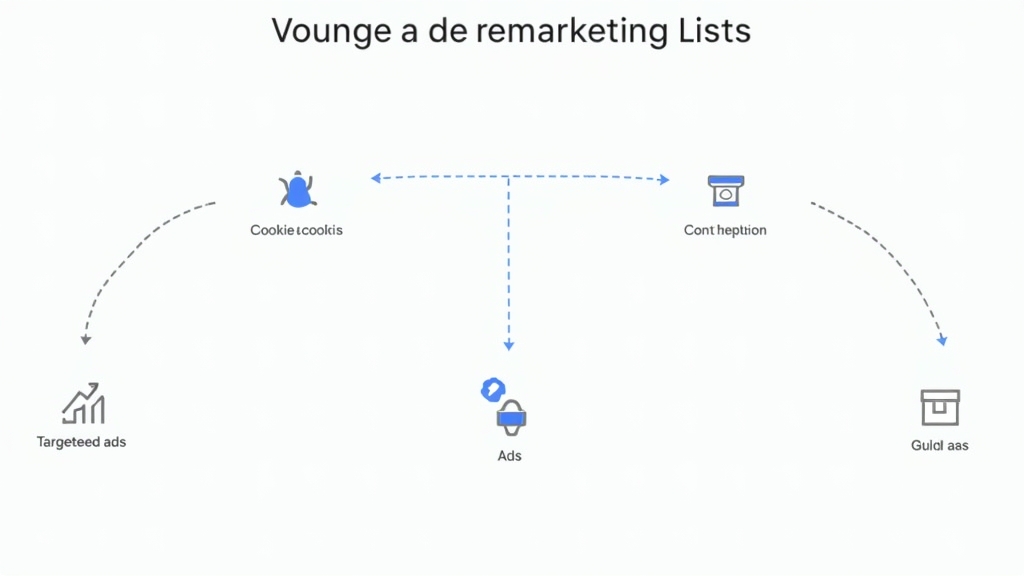Unlocking the Power of Google Ads Remarketing Lists for Effective Marketing
Introduction to Google Ads Remarketing Lists
Remarketing is a powerful tool that helps you reconnect with potential customers who have previously interacted with your website. By showing tailored ads to these users, you can remind them of your products or services and encourage them to return. In today’s digital marketing landscape, remarketing plays a crucial role in enhancing brand visibility and driving conversions. This article will explore how Google Ads remarketing lists work, their benefits, and strategies for creating effective campaigns that maximize your return on investment (ROI).
Understanding Google Ads Remarketing Lists
How Remarketing Lists Work
Google Ads remarketing lists allow you to segment users based on their previous interactions with your site. When someone visits your website, a cookie is placed in their browser. This cookie enables Google to identify the user when they browse other sites within the Google Display Network. You can then show specific ads tailored to different segments of visitors, reminding them of what they viewed or encouraging them to complete an action.
Types of Remarketing Lists Available
There are several types of remarketing lists available in Google Ads:
- Standard Remarketing: Targets users who have previously visited your site.
- Dynamic Remarketing: Shows personalized ads featuring products or services that users viewed.
- Remarketing for Search Ads: Allows you to target users who have searched for specific keywords related to your business.
- Video Remarketing: Engages users who have interacted with your videos or YouTube channel.
Each type serves different marketing goals and helps enhance user engagement.
Creating Your First Remarketing List
Steps to Set Up a Remarketing List in Google Ads
Setting up a remarketing list is straightforward:
- Sign into your Google Ads account.
- Click on “Tools & Settings” and select “Audience Manager.”
- Choose “Remarketing Lists” and click the “+” button.
- Define the criteria for your list based on user behavior (e.g., pages visited).
- Set the membership duration (how long users stay on the list).
- Save and name your list.
Once created, you can apply these lists directly to campaigns targeting specific audiences.
Best Practices for Defining Your Audience Segments
When defining audience segments, consider factors like:
- User Behavior: Segment by actions taken on your site (e.g., product views vs purchases).
- Timeframe: Create lists based on recent activity; shorter timeframes often yield better results.
- Demographics: Tailor segments according to age, gender, or location if relevant.
Using these best practices ensures you’re reaching the right people with relevant messages.
Strategies for Using Google Ads Remarketing Lists
Targeting Previous Website Visitors
One effective strategy is targeting previous visitors who didn’t convert during their first visit. By displaying ads that highlight special offers or new arrivals, you can entice them back and increase conversion rates significantly.
Engaging with Cart Abandoners
Cart abandoners represent potential lost sales opportunities; therefore, creating a dedicated remarketing list for these users is essential. Use targeted ads offering discounts or reminders about items left in their cart—this approach encourages them to finalize their purchase.
Customizing Ads Based on User Behavior
Customizing ads based on user behavior enhances relevance and effectiveness. For example, if someone browsed shoes but didn’t purchase any, show them shoe-related promotions rather than unrelated products—this increases chances of engagement.
Measuring the Success of Your Remarketing Campaigns
Key Performance Indicators (KPIs) to Track
To measure success effectively, track KPIs such as:
- Click-Through Rate (CTR): Indicates how engaging your ad is.
- Conversion Rate: Measures how many clicks lead to desired actions like purchases.
- Cost Per Acquisition (CPA): Helps assess how much you’re spending per converted customer.
These metrics provide insights into campaign performance and areas needing improvement.
Tools for Analyzing Campaign Performance
Utilize tools like Google Analytics alongside Google Ads reporting features for comprehensive analysis:
- Monitor traffic sources through Analytics.
- Use conversion tracking in Google Ads for precise ROI calculations.
These tools help refine future campaigns based on data-driven decisions.
Common Mistakes to Avoid with Google Ads Remarketing
Underestimating Audience Segmentation
A common mistake marketers make is not segmenting audiences effectively enough; this leads to generic messaging that fails to resonate with diverse groups within your audience base—always tailor messages accordingly!
Neglecting Ad Frequency Management
Another pitfall involves neglecting ad frequency management; bombarding users with too many ads can cause annoyance rather than engagement! Set frequency caps within campaigns so that viewers see each ad just enough without feeling overwhelmed.
Case Studies: Successful Use of Remarketing Lists
Brands That Excelled with Google Ads Remarketing
Several brands have successfully utilized remarketing lists through innovative strategies:
- A travel agency increased bookings by 30% using dynamic remarketing tailored specifically toward past visitors searching similar trips.
- An e-commerce store saw significant revenue growth after targeting cart abandoners with personalized discount offers via email follow-ups combined with display ads across networks!
These examples illustrate how effective implementation drives tangible results!
Lessons Learned from Their Campaigns
Key lessons learned include understanding audience needs deeply while leveraging data analytics effectively! Additionally maintaining flexibility allows brands quick adjustments based upon real-time feedback ensuring optimal performance throughout campaigns!
Conclusion: Maximizing ROI with Google Ads Remarketing Lists
In conclusion, utilizing Google Ads remarketing lists provides immense opportunities for businesses looking forward towards maximizing ROI! By understanding audience behaviors while implementing strategic approaches outlined here—you’ll be well-equipped at turning potential customers into loyal ones over time!
📢 Explore More: Continue Your Journey!
If this article helped you understand more about digital marketing tactics, check out our piece titled “Effective Strategies for Boosting Online Sales.” It covers practical tips helping you enhance online sales efforts effectively!














![NEEWER 55W 18"/45cm Ring Light Kit [New Version], 5600K Dimmable ...](https://m.media-amazon.com/images/I/414QLqvZWLL._AC_.jpg)








